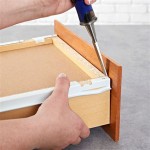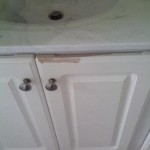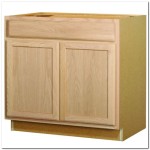Kitchen Cabinets Trim Moulding: An Essential Guide
Kitchen cabinets are an integral part of any kitchen, providing both storage and style. Trim molding, the finishing touch to your cabinets, can enhance their appearance and create a cohesive look in your kitchen. Here's a comprehensive guide to kitchen cabinet trim molding, exploring its types, materials, installation tips, and design considerations:
Types of Trim Moulding
There are several types of trim molding available, each with its unique profile and purpose:
- Base Molding: Installed at the base of cabinets, it conceals any gaps between the cabinet and the floor.
- Crown Molding: Mounted at the top of cabinets, it adds height and visual interest to the room.
- Light Rail Molding: Installed between upper and lower cabinets, it provides a decorative element and can house under-cabinet lighting.
- Valance Molding: Similar to light rail molding, it's typically installed beneath upper cabinets to conceal the underside and add a decorative touch.
Materials for Trim Moulding
Trim molding is available in various materials, each offering distinct advantages:
- Wood: Classic and durable, it comes in various species and finishes to match your cabinets.
- MDF (Medium-Density Fiberboard): A cost-effective option, it's easy to paint and can mimic the look of wood.
- PVC (Polyvinyl Chloride): Moisture-resistant and lightweight, it's ideal for areas prone to moisture.
- Polyurethane: Durable and versatile, it's resistant to moisture, insects, and fading.
Installation Tips
Proper installation is crucial to ensure a professional finish:
- Measure and Cut Accurately: Measure the cabinet openings and cut the trim molding to the precise length.
- Use a Miter Joint: Cut the molding at a 45-degree angle and connect it using a miter joint for a seamless appearance.
- Secure with Nails or Adhesive: Use finishing nails or construction adhesive to attach the trim molding to the cabinets.
- Fill Nail Holes: Once installed, fill any nail holes with wood filler for a smooth finish.
Design Considerations
In addition to functionality, trim molding can also enhance the aesthetics of your kitchen:
- Match the Cabinet Style: Choose trim molding that complements the style of your cabinets, whether traditional, modern, or transitional.
- Consider the Size of Your Kitchen: Larger kitchens can accommodate more elaborate trim molding, while smaller kitchens benefit from simpler designs.
- Add Decorative Details: Use trim molding to create interesting visual effects, such as crown molding with dentil or egg-and-dart patterns.
- Paint or Stain: Customize the trim molding by painting or staining it to match your kitchen decor.
Conclusion
Kitchen cabinet trim molding is an essential element that enhances both the function and aesthetics of your kitchen. By selecting the right type, material, and installation technique, you can create a cohesive and stylish look that will elevate your kitchen design. Whether you're seeking classic elegance or modern flair, trim molding can transform your cabinets and create a beautiful and inviting space.

Adding Crown Molding To Cabinets Young House Love

Adding Moldings To Your Kitchen Cabinets Remodelando La Casa

Diy Kitchen Cabinet Upgrade With Paint And Crown Molding

7 Types Of Cabinet Moldings And How To Use Them Properly

Decorative Molding Timberlake Cabinetry

The Easiest Way To Install Crown Molding On Cabinets Kitchen Makeover Renovation Cabinet Trim

3 Ways To Enhance Your Kitchen With Crown Molding

11 Kitchen Cabinet Crown Molding Ideas For Your

Adding Moldings To Your Kitchen Cabinets Remodelando La Casa

7 Types Of Cabinet Moldings And How To Use Them Properly
Related Posts








